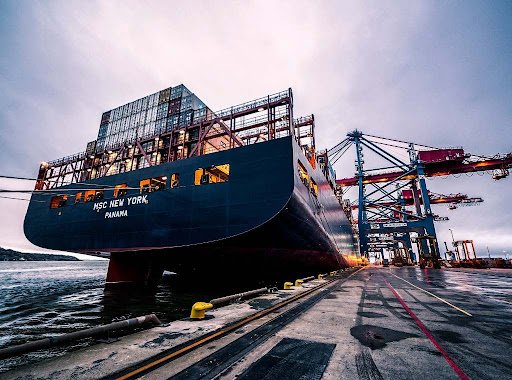How Big Data is Transforming Logistics Decision-Making
A new era in logistics: data at the center of all the decisions
Long governed by experience, intuition, and traditional models of prediction, logistics is now in an era dominated by the ability of data. Big Data, which refers to the analysis of large and diverse amounts of data in real-time, is changing the ways companies plan and manage the supply chain. Because of this, logistics-related decision-making is no longer just reactive , but is now active, specific, precise, and contextualized.
The criticality of awareness of Big Data in the logistics environment
Big Data in logistics of rental warehouse Dubai includes internal data (inventory, orders, and deliveries) and external data (weather, traffic, and consumer behavior, including vehicle geolocation and market trends). Data is collected from IoT sensors, Enterprise Resource Planning (ERP) software, eCommerce platforms, social media, and tracking devices.
It’s structured, semi-structured, or unstructured and is processed by algorithms that enable the detection of patterns, correlations, or forecasting scenarios.
Optimization of inventory and real-time management
One nice benefit of Big Data is dynamic inventory of side loader trailer management. Using both historical and real-time data, businesses can determine exactly how much inventory to hold based on demand. They can avoid running out of stock or holding too much excess inventory. They can also make adjustments to production in accordance with demand. Analytical tools can identify quickly selling products, with a quick look at a distribution center, holding costs attributed to painfully slow moving goods, available storage space, and seasonal spikes. Being able to better plan financially, with reduced costs, improves overall organizational flexibility and helps with rapid responses to unexpected events.
Improved demand expectations and forecasting
Big data solutions allow a better forecast of demand changes by amalgamating data from external variables, such as marketing activities, online purchasing behaviour, cultural events and even weather forecasts. Machine learning algorithms using this data then detect various signals, in turn creating predictive models that support smarter production, distribution and purchasing decisions. These forecasts would be more flexible and accurate than what was previously available.
Controlling transport and reducing delays
Big data is altering the management of transportation operations, by providing worldwide real-time visibility into the flow. Vehicles equipped with GPS and sensors are able to relay information about their whereabouts, fuel use, and state of their path. This allows improving routes to avoid congestion, saving delivery time, and improving service. Logistics platforms can capitalize on this data to predict latitude delivery times, provide customers with their arrival times, and reallocate resources as needed.
Following In the supply chain, providing enhanced traceability
Transparency is vital in modern supply chains. Through the supply chain, big data can provide full traceability of products from production to payoff.In conjunction with RFID tags, temperature sensors, transport logs, and digital scans to track products in the supply chain, these data will give full traceability throughout the process of the product. If something happens like theft, misplacement, or non-conformance the data helps facilitate fast response and identify the source of the issue. This is crucial for regulated industries in countries like food and pharmaceuticals.
Customer service enhancements and customization of the customer experience
Big data allows logistics companies to know their customers and customize their services for their customers’ unique needs. When e-commerce platforms or delivery services make use of purchase geolocation, browsing and returned product data, they can provide custom timing slots, real-time tracking opportunities, and whether customers want to receive communications proactively or as needed. This enhances customer satisfaction and fosters loyalty.
Resilience and resilience of chains and risk management
Utilizing a variety of data sources, including health, political, climate, and economic data, companies can anticipate risk factors that may impact their supply chain. Big Data provides opportunities for risk mapping, impact simulation, and modeling alternatives. This mineral resource will help ensure operations, also giving them the flexibility to diversify their suppliers, improve their continuity planning, and thus, also be more resilient in a crisis.
To diminish the environmental footprint while maximizing the use of energy.
Big data supports increasingly sustainable logistics. Companies examine energy consumption in their warehouse, emissions produced by vehicles, truck occupancy rates, journey times etc., to minimize their environmental footprint. Based on this data, they can determine shorter routes, fill vehicles to optimum levels, switch modes of transportation, and track their social responsibility goals. This method supports the sector’s ecological transformation.
Automation and integration of artificial intelligence
Massive data processing opens the way for automated logistics, including smart warehouses, picking robots, automated sorting systems, and autonomous vehicles. Big Data gives the information that these systems need to make autonomous decisions, such as ordering refills or rerouting packages, fixing delivery errors. Together with artificial intelligence, it can deliver precision and timely, scalable control of the entire supply chain.
Data security and management of ethical issues
Digitalization is essential for security, privacy and ethics. Businesses have to protect personal data; protect systems from evil-doers; as well as enact the legal requirements imposed on them (e.g., GDPR). The processing of personal data ought to be an issue fraught with controlled access, governance, and transparency, especially with regard to the customer. Big Data is powerful when managed correctly, but it has to be managed to prevent misuse and exploitation of weaknesses.
Organizational and technical challenges
Integration of Big Data into logistics requires investment in hardware, software, and, most importantly, the ability to train. Organizations need to evolve their infrastructure, hire domain experts and change their processes. For analysis to be meaningful, organizations need to ensure interoperability between systems, quality of the data they collect, and fluidity of flow. The problem is also a matter of changing culture from an operational logic to a data-driven method, which takes time and requires support.
Concrete cases and sectors that are pioneering
Retailers have widely implemented Big Data to synchronize store stocks and adjust supply according to demand. Pharmaceutical companies use traceability data to ensure the delivery. E-commerce works on algorithms that determine the fastest shipping routes. Delivery services like UPS and DHL have data they can use to make shipping produce more performance, more efficiency, and better service. These examples demonstrate how Big Data is already a practical and tangible strategic tool.
A step towards collaborative and predictive logistics
Big Data is pushing logistics closer to a predictive and collaborative model. Businesses don’t only react; they anticipate projected demand, possible incidents, and regulatory changes. Through advanced dashboards, automated alerts, and forecasts in real-time, logistics-related decision making is evolving into a collaborative and fluid process. Supply chain partners, suppliers, distributors, and carriers will communicate with shared data, with a strong sense of transparency and collaborative performance.







